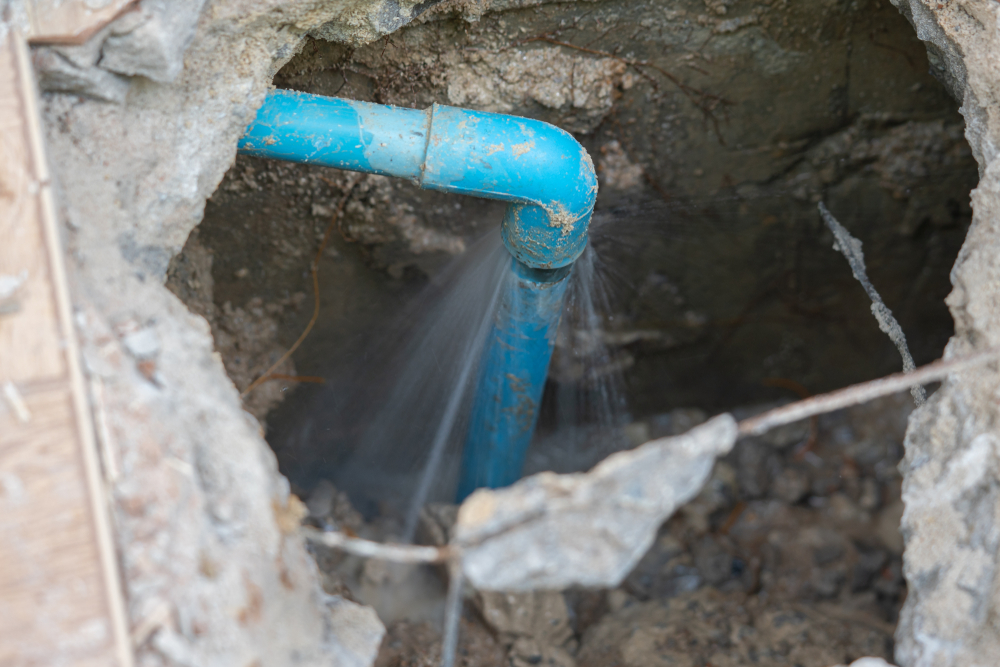Expose Concealed Water Line Leaks: Six Proven Detection Techniques
Expose Concealed Water Line Leaks: Six Proven Detection Techniques
Blog Article
We've stumbled on this post about Top leak detection hacks down the page on the net and reckoned it made sense to relate it with you on this page.

Early detection of leaking water lines can alleviate a prospective catastrophe. Some tiny water leaks may not be noticeable.
1. Analyze the Water Meter
Every home has a water meter. Checking it is a guaranteed manner in which helps you discover leaks. For beginners, switch off all the water sources. Make certain no one will flush, use the faucet, shower, run the washing equipment or dish washer. From there, go to the meter and also watch if it will certainly alter. Considering that no one is using it, there must be no motions. If it moves, that suggests a fast-moving leakage. Likewise, if you find no changes, wait a hr or two and inspect back once more. This implies you may have a slow-moving leak that could also be below ground.
2. Examine Water Intake
If you identify abrupt changes, in spite of your intake being the very same, it suggests that you have leaks in your plumbing system. An abrupt spike in your expense suggests a fast-moving leak.
A stable rise every month, even with the very same routines, shows you have a slow-moving leak that's also gradually rising. Call a plumber to completely inspect your residential property, especially if you really feel a cozy location on your flooring with piping underneath.
3. Do a Food Coloring Test
When it involves water usage, 30% comes from bathrooms. Test to see if they are running appropriately. Decrease specks of food color in the container and wait 10 mins. There's a leakage in between the tank and also dish if the shade somehow infiltrates your bowl throughout that time without flushing.
4. Asses Exterior Lines
Don't neglect to inspect your outside water lines as well. Must water leak out of the link, you have a loosened rubber gasket. One small leak can throw away heaps of water and also surge your water bill.
5. Evaluate and also Analyze the Scenario
Homeowners should make it a behavior to inspect under the sink counters and also inside cupboards for any bad odor or mold and mildew growth. These 2 red flags suggest a leak so punctual interest is called for. Doing regular examinations, even bi-annually, can save you from a major problem.
Much more significantly, if you recognize your residence is currently old, maintain a watchful eye on your heating systems, hoses, pipes and so on. Look for stainings and also weakening as a lot of appliances and pipelines have a life span. They will certainly additionally normally deteriorate as a result of tear and also wear. If you presume leaking water lines in your plumbing system, don't await it to rise. Call a specialist plumber immediately so you do not wind up with a dreadful mess in your home.
Early discovery of leaking water lines can reduce a prospective catastrophe. Some small water leaks may not be visible. Inspecting it is a proven way that assists you find leakages. One little leakage can squander bunches of water and spike your water bill.
If you believe leaking water lines in your plumbing system, don't wait for it to rise.
How to Know If Your Home Has a Hidden Leak
Water Meter Reveals Inexplicable Water Usage
If you’d like to test whether or not there’s a leak somewhere in your home, you can do this using your water meter. Here is how to conduct the test:
Don’t use any water in your home for at least 30 minutes; this also means not turning on faucets or water-using appliances.
Go outside, and check your water meter for activity.
If your water meter shows that there was activity, even though no one was using any water, this proves that there is a leak in your home.Visible Mold or Mildew Growth
Leaks behind walls create moist, dark environments that allow mold and mildew to grow and thrive. Eventually, you might see mold growth forming on the wall closest to a hidden leak.
If mold is growing in an area that receives a high amount of moisture, such as a bathroom, it may simply be an indication that better ventilation is needed. However, if you see mold growth on a wall or the ceiling in an area where you would not expect, you probably have a hidden leak.
Musty, Mildew Odor
Sometimes you might not be able to see the mold or mildew that is growing as a result of a leak. However, the smell can give the problem away just as easily. If you catch a whiff of something musty, there’s a good chance that old water is collecting somewhere in your home that you can’t see.
Stained/Warped Walls, Ceilings, or Floors
When your home soaks up water, a variety of red flags can become visible, including ceiling stains, bubbling drywall, warped walls, and sagging floors. While these issues can be caused by excess humidity, they can also be signs that a pipe or plumbing connection has started leaking behind your walls.
Inexplicably High Water Bill
After a while, you get a general sense for what your water bill should be. If you own a pool or sprinkler system, your bill will tend to be higher during summer. However, if you receive a water bill that seems especially high, and you can’t figure out what caused it, then you may have a hidden leak somewhere that’s increasing your bill.
https://www.plumbingjoint.com/blog/2019/july/how-to-know-if-your-home-has-a-hidden-leak/

We are very fascinated by Leaking water lines and I really hope you appreciated the new page. Sharing is caring. You never know, you may just be doing someone a favor. I enjoy reading our article about Finding hidden leaks.
Book A Service Call Report this page